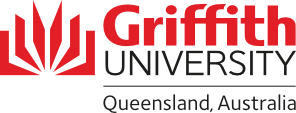Project Description
Synthetic N-fertiliser is a foundation of modern agriculture; however, its efficiency is often only 50%, leading to nutrients runoff into nearby creeks, causing e.g. eutrophication and fish kill events. Nitrogen pollution and climate change constitute the two greatest risks to the survival of the GreatBarrier Reef (GBR). To address N pollution from cropping and the large carbon and energy footprint of N-fertiliser synthesis, new technologies are needed.
This project aims to develop sustainable biofertilisers applications to reduce the environmental footprint of agriculture, by boosting the efficiency of nutrient delivery whilst minimising energy and water needs for production. Biofertilisers through nutrient-rich digestate from anaerobic digestion processes (GU) and microalgae (UQ) were designed, while assessing their impact on measured water quality. Biofertiliser application strategies will be trialled both at lab and field scale for different types of identified horticultural crops and environments in the GBR area, including their incorporation as sustainable additive into novel revegetation mats (UQ). High-frequency mobile, remote water quality monitoring stations (GU) will evaluate their effects on surrounding natural water bodies. Machine learning and other established interdisciplinary modelling approaches will be used to interpret the data and optimise features and application of such biofertilisers. Measured and modelled water quality changes will be used to predict impacts on the GBR biodiversity downstream. If such products prove themselves more effective than synthetic fertilisers, upscaling opportunities arise, leading to not only waste reduction and new job opportunities, but importantly to a reduction in waterways pollution in the GBR area, which in turn will lead to better preservationof its biodiversity.
Project Personnel and Beneficiaries
Farmers: if the project is successful, we will prove that they might have a better alternative to traditional fertiliser, thus saving money and reducing pollution.
Great Barrier Reef: reducing the risk from one of its major threat, thus preserving its water quality and biodiversity. In turn local tourism operators and overall the entire local communities will benefit from a sustained flux of tourists.
Outcomes to Date
To date (mid-2023) the project is moving from lab work to field work, to test the products. The products have been applied in a farm in Bundaberg and we are undertaking the data collection.
Project Significance
Climate change and water quality issues are the two major threats to the GBR as identified by the GBR Foundation. Nutrients runoff, entering GBR from catchments in major pastoral/agricultural areas, can cause algal blooms, smothered corals, crown-of-thorns starfish outbreaks, and thus significant damage to such $56 billion asset. By developing, and proving the effectiveness of, new biofertilisers, we can reduce such nutrient pollution problem, contributing directly to better water quality (SDG 6) and biodiversity preservation (SDG 14). Reducing the damage to such asset will preserve its economic value, while also reducing expenses for farmers (SDG 8). By reducing the fertiliser runoff we are also reducing the waste of chemicals (SDG12), while at the same time developing our products from, largely, waste products.

